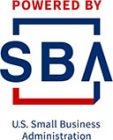Are you ready to go global? If you’re the owner of an established small business that is generally successful and profitable, you may have heard that expanding into international business markets is an easy way to grow. Well, we wouldn’t say it’s easy, but if you’re willing to invest your time and resources into learning the process and vernacular, it can pay off. In this article, we articulate the benefits of selling abroad, and outline the initial steps towards this goal.
Why sell your product or service to international markets?
1. Exponentially expand your customer base. 95% of the world’s population lives outside of our U.S. borders. Many of them may fall into your prime customer demographic.
2. Reduce your risk through diversification. International markets frequently rise and fall independently of domestic markets. When sales are down domestically, or your customer base is diminishing, you could be finding new buyers and selling strongly abroad.
3. With access to international markets, your business can take advantage of seasonal demand cycles across the northern and southern hemispheres.
4. Attract better talent. Companies that export pay their workers higher rates of pay on average which enables them to attract more experienced and skilled workers.
5. Grow faster. Companies that export tend to grow the top line and the bottom line faster than companies that don’t export.
How to break into global business
There are three initial phases to launch into international business. Below we break out the steps of each phase, including a rough timeline of how long you can expect each phase to take. From research and planning, to making initial trips to your target countries, expect to spend six months to several years preparing for this exciting new facet of your company.
Phase 1: Education (6 months – 1 year)
Because you already have a day job of running your business, expect to spend 6-12 months just educating yourself about the process, the barriers, the options and possible avenues for expanding into global markets. Spend this time reading, talking to experts, learning the language and acronyms of international business, finding out what you don’t know, and “increasing your export IQ,” said RISBDC counselor Dennis McCarthy.
Great ways to begin this learning process include:
1. Show up. Attend international trade seminars wherever you can find them. Start by looking at your local university, business development organizations, the United States Department of Commerce, CommerceRI, and the Chafee Center for International Business at Bryant University.
2. Network. Reach out to existing exporters and support personnel (consultants, logistics staff, shipping/receiving companies, and United States government employees who support the export industry). Ask about their processes, timelines, and failures or roadblocks they surmounted. Seek out a mentor who has walked this road before you.
3. Read. Spend as much time as possible gathering information from reputable sources, like the United States Department of Commerce website export.gov. A treasure trove of up-to-date guidance, start with their Basic Guide to Exporting to break down the information targeting markets, logistics, channels of distribution, finding buyers, a glossary of trade terms, and more.
Phase 2: Planning (6 months – 1 year)
Once you’ve spent a good deal of time getting your head around the exporting landscape, now begins the process of planning how your particular small business will move into the international business market. This phase will involve detailed research and networking as you choose your path.
1. Identify how you are going to sell internationally
There are many different ways to sell internationally. Each comes with its own strategy, planning, and paperwork. Without going too deeply into export compliance issues, the following is a broad overview so you can begin to decide which approach best fits your business.
- Sell your component to a domestic company that then finishes the product and exports it to the international end user.
- Work with an export management company.
- Hire an independent rep using a detailed contract that spells out each party’s responsibilities.
- Open your own office in the target market. You staff it, your employees sell the product, and support the product. This is the most expensive approach and therefore bears the most risk.
- Identify a wholesaler or a distributor that is willing to take on your product and sell it internationally for you. This company will have representatives in your target global market and will ideally already be selling products that complement your products, so they are already talking to the same consumers that could potentially purchase your product. It is essential that each party has a clear understanding of how the relationship benefits the other. Before you approach a wholesaler or distributor, carefully make a compelling case for why they should take on your company. Consider investing in market testing, focus groups, and surveys to prove demand. “The process leading up to this step needs to be very thoughtful and comprehensive,” said RISBDC counselor Dennis McCarthy.
- Sell your product to a foreign company that has an office in the United States. They purchase your product, then export it back to their homebase abroad. This approach eliminates the process of you having to support the product in the foreign market with sales, service and a warranty, so it is lower risk.
2. Identify international market opportunities
Export statistics can tell you which countries are importing products similar to yours. For example, a Vermont cheese maker will probably not find a very large market in France, which is a low importer of cheese. Identifying countries that import cheeses at a higher rate will be an important first step. The United States Department of Commerce has valuable statistics stemming from the harmonized tariff system, the coding system used to classify products coming in or going out of the United States.
You will also want to find countries that have low tariffs and barriers to enter their market. Nontariff barriers include quotas, or onerous labeling, licensing, and permitting requirements.
For reference, the top export destinations for American companies, in order, are Canada, Mexico, and China.
3. Tap into government assistance
You don’t have to go it alone. International business counselors at the RISBDC can steer you to the appropriate research and tables containing information that will shape your next steps. They can help guide you to the harmonized tariff codes that cover your products, along with advice on tariffs, barriers, and general ease of doing business with a country you have in mind.
4. Consider your target international customer
Along with finding countries who are friendly to do business with, you also need to find the customers in those locales who are apt to buy your products. Here your export strategy will be similar to your domestic one — you’ll be looking at per capita income, demographics, and more, to ensure that once you clear the export hurdles, viable new customers are there. If your product appeals to retirees but your target country’s demographics skew under-30, the market may not be large enough to be worth the effort.
5. Evaluate how your value proposition shifts abroad
What elements of your product delivers value to your domestic customers? Those things may well shift in a foreign market. Research and identify cultural differences — lifestyle, colors, and packaging, for example — to be accounted for in the final exported product.
Phase 3: Travel (3 months – 2 years)
1. Pack your bags
When you’ve narrowed your search down to a couple of countries, it’s time to fly. Attend a trade show catering to your industry, and walk the floor, talking to people, and collecting business cards. Try to get a feel for the differences in consumer tastes and requirements between that country and the United States. Begin to develop a profile of the foreign consumer, and what changes or adaptations your product will need to be successful.
On a second trip, you’ll exhibit at the show, developing contacts with distributors and sales reps. And plan on a third trip, perhaps a trade mission (see below) or returning to sign an agreement with a distributor.
2. Attend a trade mission
When you’ve made it this far, you’re ready to attend a trade mission. This is basically an organized, trade-specific tour of a country/region, often arranged by the United States Department of Commerce or state agencies, for the purpose of meeting with relevant parties and exploring trade opportunities abroad. On a trade mission, your appointments and meetings are scheduled and you are able to meet with industry executives and government and legal officials, network with prospective partners, and make site visits as appropriate.
How much will this process cost?
Initially, the process requires more of your time than money. Networking, attending seminars, and researching are intensive, but not expensive. When you’ve narrowed your search to one or two target markets and you initiate travel, budget accordingly. As a broad starting point (depending on your product, market, and export strategy), assume you’ll invest somewhere between $15,000-$30,000 for these two or three trips to cement the foundation of your exporting venture.
The good news? The United States government has various grants and programs that subsidize some of these costs and in particular can assist with funding for trade missions. The Department of Commerce’s Gold Key Service program is subsidized by CommerceRI. The SBA also offers a State Trade Expansion Program (STEP), providing education and training for exporting, which is offered in RI through the Chafee Center.
Does it seem like a big undertaking?
Selling internationally is a big challenge, but if you are willing to invest the time and money, there are plenty of resources to make it happen. RISBDC counselors can navigate the many government services, grant programs, and export compliance issues and help you to develop an export strategy. The RISBDC has two counselors who specialize in international markets. Contact us today to join a workshop or meet one-on-one with them.




